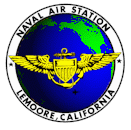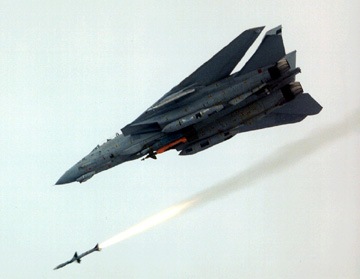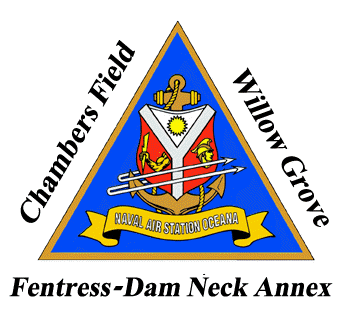|
VFA-2
Strike Fighter Squadron 2 (VFA-2) also known as the "Bounty Hunters" is a United States Navy F/A-18F Super Hornet strike fighter squadron based at Naval Air Station Lemoore, California. Their tail code is NE and their callsign is "Bullet". They are attached to Carrier Air Wing 2 (CVW-2), a composite unit made up of a wide array of aircraft performing a variety of combat and support missions that deploy aboard the . History Four distinct squadrons have been designated VF-2. Officially, the US Navy does not recognize a direct lineage with disestablished squadrons if a new squadron is formed with the same designation. Often, the new squadron will assume the nickname, insignia, and traditions of the earlier squadrons. 1970s VF-2, known as the "Bounty Hunters," was established on 14 October 1972 flying the F-14A Tomcat. VF-2 completed aircrew training and received its first Tomcats in July 1973, attaining full strength of 12 F-14As in the spring of 1974. VF-2's initial deployment w ... [...More Info...] [...Related Items...] OR: [Wikipedia] [Google] [Baidu] |
F/A-18F Super Hornet
The Boeing F/A-18E and F/A-18F Super Hornet are twin-engine, carrier-capable, multirole fighter aircraft variants based on the McDonnell Douglas F/A-18 Hornet. The F/A-18E single-seat and F/A-18F tandem-seat variants are larger and more advanced derivatives of the F/A-18C and D Hornet. The Super Hornet has an internal 20 mm M61 rotary cannon and can carry air-to-air missiles and air-to-surface weapons. Additional fuel can be carried in up to five external fuel tanks and the aircraft can be configured as an airborne tanker by adding an external air-to-air refueling system. Designed and initially produced by McDonnell Douglas, the Super Hornet first flew in 1995. Low-rate production began in early 1997 with full-rate production starting in September 1997, after the merger of McDonnell Douglas and Boeing the previous month. The Super Hornet entered fleet service with the United States Navy in 1999, replacing the Grumman F-14 Tomcat, which was retired in 2006; the Supe ... [...More Info...] [...Related Items...] OR: [Wikipedia] [Google] [Baidu] |
Naval Air Station Lemoore
Naval Air Station Lemoore or NAS Lemoore is a United States Navy base, located in Kings County and Fresno County, California, United States. Lemoore Station, a census-designated place, is located inside the base's borders. NAS Lemoore is the Navy's newest and largest master jet base. Strike Fighter Wing Pacific, along with its associated squadrons, is home ported there. NAS Lemoore also hosts five carrier air wings: Carrier Air Wing Two (CVW-2), Carrier Air Wing 5 (CVW-5), Carrier Air Wing Nine (CVW-9), Carrier Air Wing Eleven (CVW-11), and Carrier Air Wing Seventeen (CVW-17). History Commissioned in 1961, NAS Lemoore, as seen from an aircraft flying above, looks significant and stands out from the farmlands of Central California, due to its large construction. It is the newest and largest master jet base of the U.S. Navy. It has two offset parallel runways apart. Aircraft parking and maintenance hangars are aligned between the runways. Separated from the hangars by underp ... [...More Info...] [...Related Items...] OR: [Wikipedia] [Google] [Baidu] |
Grumman F-14 Tomcat
The Grumman F-14 Tomcat is an American carrier-capable supersonic, twin-engine, two-seat, twin-tail, variable-sweep wing fighter aircraft. The Tomcat was developed for the United States Navy's Naval Fighter Experimental (VFX) program after the collapse of the General Dynamics-Grumman F-111B project. The F-14 was the first of the American Teen Series fighters, which were designed incorporating air combat experience against MiG fighters during the Vietnam War. The F-14 first flew on 21 December 1970 and made its first deployment in 1974 with the U.S. Navy aboard , replacing the McDonnell Douglas F-4 Phantom II. The F-14 served as the U.S. Navy's primary maritime air superiority fighter, fleet defense interceptor, and tactical aerial reconnaissance platform into the 2000s. The Low Altitude Navigation and Targeting Infrared for Night ( LANTIRN) pod system was added in the 1990s and the Tomcat began performing precision ground-attack missions. The Tomcat was retired by U.S. Navy ... [...More Info...] [...Related Items...] OR: [Wikipedia] [Google] [Baidu] |
F-14A VF-2 USS Enterprise (CVAN-65) 1975
The Grumman F-14 Tomcat is an American carrier-capable supersonic, twin-engine, two-seat, twin-tail, variable-sweep wing fighter aircraft. The Tomcat was developed for the United States Navy's Naval Fighter Experimental (VFX) program after the collapse of the General Dynamics-Grumman F-111B project. The F-14 was the first of the American Teen Series fighters, which were designed incorporating air combat experience against MiG fighters during the Vietnam War. The F-14 first flew on 21 December 1970 and made its first deployment in 1974 with the U.S. Navy aboard , replacing the McDonnell Douglas F-4 Phantom II. The F-14 served as the U.S. Navy's primary maritime air superiority fighter, fleet defense interceptor, and tactical aerial reconnaissance platform into the 2000s. The Low Altitude Navigation and Targeting Infrared for Night (LANTIRN) pod system was added in the 1990s and the Tomcat began performing precision ground-attack missions. The Tomcat was retired by U.S. Navy on ... [...More Info...] [...Related Items...] OR: [Wikipedia] [Google] [Baidu] |
F-14D VF-2 Takeoff Fom USS Constellation (CV-64)
The Grumman F-14 Tomcat is an American carrier-capable supersonic, twin-engine, two-seat, twin-tail, variable-sweep wing fighter aircraft. The Tomcat was developed for the United States Navy's Naval Fighter Experimental (VFX) program after the collapse of the General Dynamics-Grumman F-111B project. The F-14 was the first of the American Teen Series fighters, which were designed incorporating air combat experience against MiG fighters during the Vietnam War. The F-14 first flew on 21 December 1970 and made its first deployment in 1974 with the U.S. Navy aboard , replacing the McDonnell Douglas F-4 Phantom II. The F-14 served as the U.S. Navy's primary maritime air superiority fighter, fleet defense interceptor, and tactical aerial reconnaissance platform into the 2000s. The Low Altitude Navigation and Targeting Infrared for Night (LANTIRN) pod system was added in the 1990s and the Tomcat began performing precision ground-attack missions. The Tomcat was retired by U.S. Navy ... [...More Info...] [...Related Items...] OR: [Wikipedia] [Google] [Baidu] |
CVW-2
Carrier Air Wing Two (CVW-2) is a United States Navy aircraft carrier air wing based at Naval Air Station Lemoore. The air wing is attached to the aircraft carrier . Subordinate units CVW-2 consists of 9 Squadrons History 1940s-50s Originally established as CVBG-74 (Battle Air Group) on 1 May 1945, it was renamed CVBG-1 on 15 November 1946 before finally being renamed CVG-2 in 1948. During that time, CVG-2 was assigned to (CVB-41). CVG-2 later would see action during the Korean War on board the ''Essex''-class carriers , ''Valley Forge'' and ''Philippine Sea''. During the war, they supported the Inchon Invasion, bombing of North Korea-occupied Seoul and the recapture of Kimpo Airfield. Starting in 1958, the squadron started an 8-year association with the USS ''Midway'' which ended in 1966. 1960s In 1961, the first A4D-2 (A-4B) Skyhawks to join CVW-2 came aboard during a deployment in the Taiwan Strait during tensions between the two chinas (People's Republic of Ch ... [...More Info...] [...Related Items...] OR: [Wikipedia] [Google] [Baidu] |
Carrier Air Wing 2
Carrier Air Wing Two (CVW-2) is a United States Navy aircraft carrier air wing based at Naval Air Station Lemoore. The air wing is attached to the aircraft carrier . Subordinate units CVW-2 consists of 9 Squadrons History 1940s-50s Originally established as CVBG-74 (Battle Air Group) on 1 May 1945, it was renamed CVBG-1 on 15 November 1946 before finally being renamed CVG-2 in 1948. During that time, CVG-2 was assigned to (CVB-41). CVG-2 later would see action during the Korean War on board the ''Essex''-class carriers , ''Valley Forge'' and ''Philippine Sea''. During the war, they supported the Inchon Invasion, bombing of North Korea-occupied Seoul and the recapture of Kimpo Airfield. Starting in 1958, the squadron started an 8-year association with the USS ''Midway'' which ended in 1966. 1960s In 1961, the first A4D-2 (A-4B) Skyhawks to join CVW-2 came aboard during a deployment in the Taiwan Strait during tensions between the two chinas (People's Republic of Ch ... [...More Info...] [...Related Items...] OR: [Wikipedia] [Google] [Baidu] |
CVW-14
Carrier Air Wing Fourteen (CVW-14), was a United States Navy aircraft carrier air wing based at Naval Air Station Lemoore, California. Mission To conduct carrier air warfare operations and assist in the planning, control, coordination and integration of seven air wing squadrons in support of carrier air warfare including; Interception and destruction of enemy aircraft and missiles in all-weather conditions to establish and maintain local air superiority. All-weather offensive air-to-surface attacks, Detection, localization, and destruction of enemy ships and submarines to establish and maintain local sea control. Aerial photographic, sighting, and electronic intelligence for naval and joint operations. Airborne early warning service to fleet forces and shore warning nets. Airborne electronic countermeasures. In-flight refueling operations to extend the range and the endurance of air wing aircraft and Search and rescue operations. Subordinate units During the 2011 deployment th ... [...More Info...] [...Related Items...] OR: [Wikipedia] [Google] [Baidu] |
NAS Oceana
Naval Air Station (NAS) Oceana or NAS Oceana is a United States Navy Naval Air Station located in Virginia Beach, Virginia. Nowadays, the station is located on 23.9 km2. It has total of 250 aircraft deployed and buildings valued at $800 million in plant replacement value. The total Navy community (which includes spouses) count for around 20.000 people. The base is under the jurisdiction of Navy Region Mid-Atlantic and is the headquarters of Strike Fighter Wing Atlantic and Carrier Air Wing 1, Carrier Air Wings 1, Carrier Air Wing Three, 3, Carrier Air Wing Seven, 7 and Carrier Air Wing Eight, 8. As home to all East Coast strike fighter jet squadrons, the Naval Air Station is classified as a master jet base. The airfield is known as Apollo Soucek Field, named after Lieutenant (later Admiral) Apollo Soucek, a Navy test pilot who set the global altitude record in 1930 by flying a Curtiss Aeroplane and Motor Company, Curtiss ''"Hawk"'' biplane to an altitude of 43,166 feet. ... [...More Info...] [...Related Items...] OR: [Wikipedia] [Google] [Baidu] |
Operation Frequent Wind
Operation Frequent Wind was the final phase in the evacuation of American civilians and "at-risk" Vietnamese from Saigon, South Vietnam, before the takeover of the city by the North Vietnamese People's Army of Vietnam (PAVN) in the Fall of Saigon. It was carried out on 29–30 April 1975, during the last days of the Vietnam War. More than 7,000 people were evacuated by helicopter from various points in Saigon. The airlift resulted in a number of enduring images. Evacuation plans already existed as a standard procedure for American embassies. At the beginning of March, fixed-wing aircraft began evacuating civilians from Tan Son Nhat Airport through neighboring countries. By mid-April, contingency plans were in place and preparations were underway for a possible helicopter evacuation. As the imminent collapse of Saigon became evident, the U.S. Navy assembled Task Force 76 off the coast near Vũng Tàu to support a helicopter evacuation and provide air support if required. In the e ... [...More Info...] [...Related Items...] OR: [Wikipedia] [Google] [Baidu] |
Iranian Hostage Crisis
On November 4, 1979, 52 United States diplomats and citizens were held hostage after a group of militarized Iranian college students belonging to the Muslim Student Followers of the Imam's Line, who supported the Iranian Revolution, took over the U.S. Embassy in Tehran and took them as hostages. A diplomatic standoff ensued. The hostages were held for 444 days, being released on January 20, 1981. Western media described the crisis as an "entanglement" of "vengeance and mutual incomprehension." U.S. President Jimmy Carter called the hostage-taking an act of "blackmail" and the hostages "victims of terrorism and anarchy." In Iran, it was widely seen as an act against the U.S. and its influence in Iran, including its perceived attempts to undermine the Iranian Revolution and its longstanding support of the shah of Iran, Mohammad Reza Pahlavi, who was overthrown in 1979. After Shah Pahlavi was overthrown, he was admitted to the U.S. for cancer treatment. Iran demanded his return in ... [...More Info...] [...Related Items...] OR: [Wikipedia] [Google] [Baidu] |
Persian Gulf
The Persian Gulf ( fa, خلیج فارس, translit=xalij-e fârs, lit=Gulf of Persis, Fars, ), sometimes called the ( ar, اَلْخَلِيْجُ ٱلْعَرَبِيُّ, Al-Khalīj al-ˁArabī), is a Mediterranean sea (oceanography), mediterranean sea in Western Asia. The body of water is an extension of the Indian Ocean located between Iran and the Arabian Peninsula.United Nations Group of Experts on Geographical NameWorking Paper No. 61, 23rd Session, Vienna, 28 March – 4 April 2006. accessed October 9, 2010 It is connected to the Gulf of Oman in the east by the Strait of Hormuz. The Shatt al-Arab river delta forms the northwest shoreline. The Persian Gulf has many fishing grounds, extensive reefs (mostly rocky, but also Coral reef, coral), and abundant pearl oysters, however its ecology has been damaged by industrialization and oil spills. The Persian Gulf is in the Persian Gulf Basin, which is of Cenozoic origin and related to the subduction of the Arabian Plate u ... [...More Info...] [...Related Items...] OR: [Wikipedia] [Google] [Baidu] |





_insignia_1973.png)
_insignia_2013.png)



